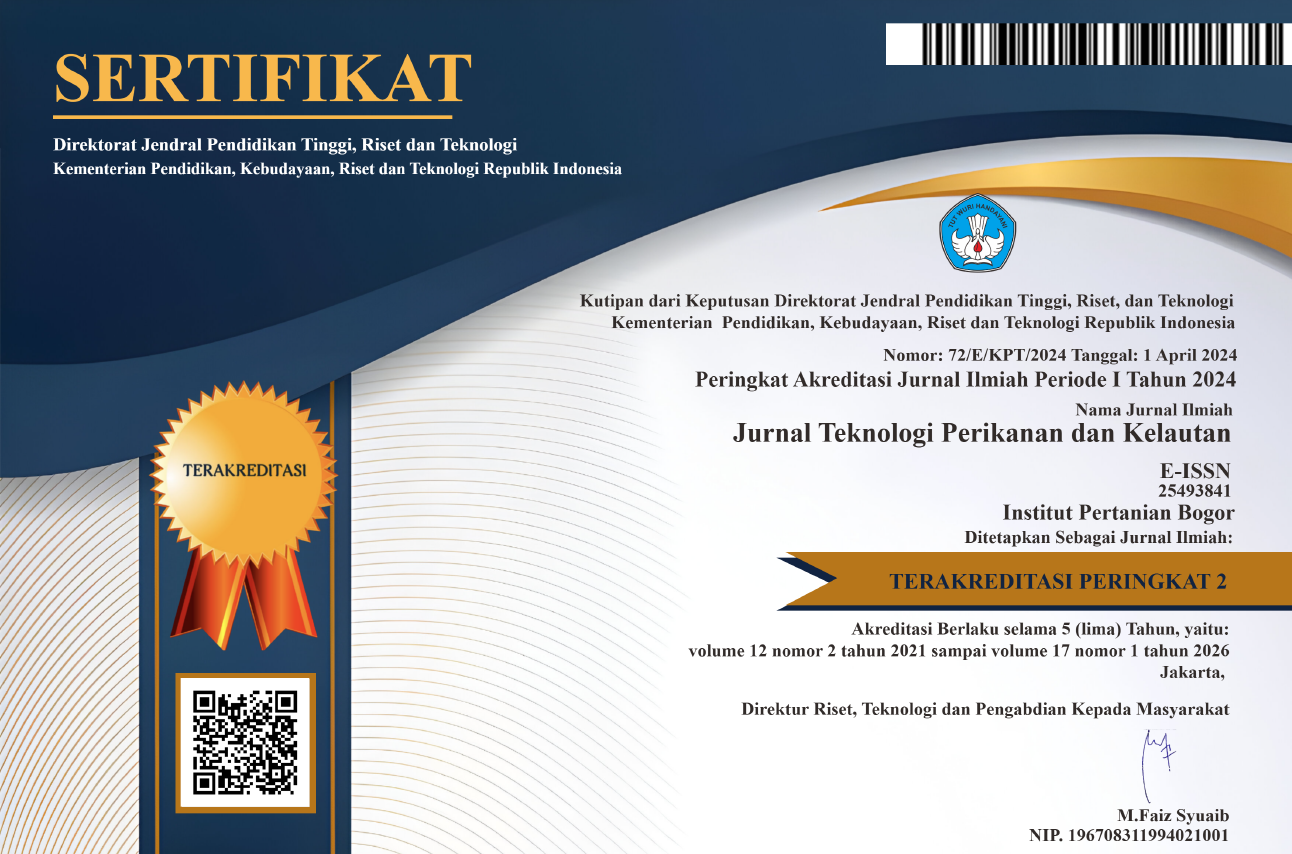DAERAH PENANGKAPAN IKAN KEMBUNG (Rastrelligger sp) DI SELAT SUNDA PADA MUSIM PERALIHAN
Abstract
Mackerel is the dominant species caught in the waters of the Sunda Strait. The fishing grounds has a very strong influence on oceanographic conditions such as temperature and chlorophyll-a. Sea surface temperature is an indicator for measuring phenomena that occur in the oceans such as currents, upwelling, fronts, while chlorophyll-a is an indicator of the fertility of a waters. The aspect of fish length is the main focus in determining fishing grounds. This study aims to analyze the catch based on chlorophyll-a, sea surface temperature, and fish length which results in mapping the fishing grounds for mackerel in the Sunda Strait waters. This research was conducted by using the case method. The analysis used in this study is the scoring associated with chlorophyll-a, sea surface temperature, fish length, and CPUE. The length of the fish is the aspect that has the greatest weight. The fishing grounds category consists of potential, medium potential and non-potential fishing categories. Based on the research results, the total catch of mackerel in the waters of the Sunda Strait during the study was 741 kg. The catch size category of fish is in the fishing grounds of Peucang Island, Panaitan Island, Paraja Bay, and Tanjung Alang-Alang. The overall chlorophyll-a content is in the high category. The fishing grounds that are included in the potential category are Peucang Island, Panaitan Island, Tanjung Alang-Alang, and Paraja Bay, while the fishing grounds that do not have the potential are Tanjung Lesung, Sumur, Sebesi, Tanjung Ketapang, dan Rakata.
Copyright (c) 2021 Jurnal Teknologi Perikanan dan Kelautan

This work is licensed under a Creative Commons Attribution-NonCommercial-ShareAlike 4.0 International License.





















